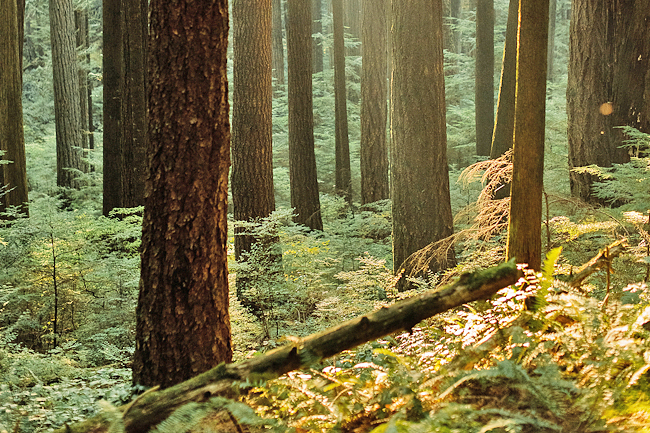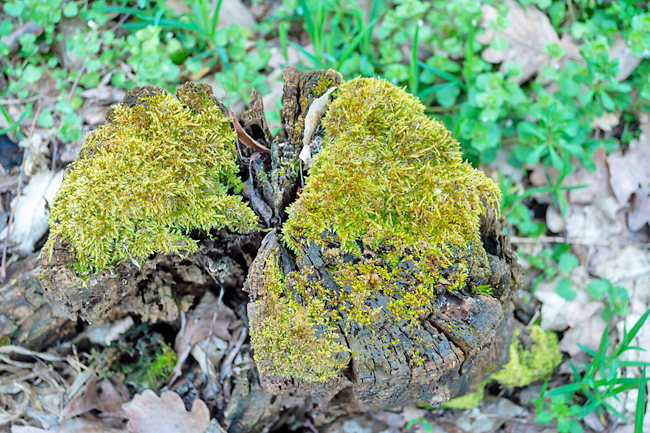Sarah Kaplan
THE WASHINGTON POST – People once saw forests as arenas of fierce competition. It was every tree for itself, each organism perpetually battling its neighbours for access to water, nutrients and light.
But when scientists dug deeper, literally, they found that the ecosystems are buttressed by an underground partnership between trees and threadlike fungi called mycorrhizae.
These fungi link into plants’ roots, providing nutrients pulled from the soil in exchange for a supply of photosynthetic sugars. In some cases, the fungal filaments have been shown to connect the roots of multiple trees, providing a pathway for nutrients to shuttle between organisms.
The discovery of these mycorrhizal connections yielded a booming new body of research on what the academic journal Nature once called “the Wood Wide Web”. Studies from British Columbia, Switzerland and elsewhere have suggested that trees use mycorrhizal networks to exchange messages and share resources with struggling seedlings.
Books, movies and news articles (including a recent story from The Washington Post) have helped popularise the concept, celebrating forests as models of cooperation in a world riven by human conflict, consumption and climate change.
Yet some researchers said their field has swung too far in the wrong direction, embracing the idea that shared mycorrhizal networks are widespread and beneficial without sufficient evidence to back up their claims.



“It’s such an appealing story, that forests are these cooperative places, that big old trees are taking care of kin… I think many people are drawn to it,” said Forest Ecologist at the University of Alberta Justine Karst who studies mycorrhizae. “But the story is ahead of the science.”
In a new perspective piece for the journal Nature Ecology and Evolution, Karst and two fellow ecologists reviewed hundreds of studies from labs and forests around the world.
They found that just a handful of experiments actually used genetic analysis to map mycorrhizal networks and show fungal links between trees.
In the studies that found signs of resource transfer, the scientists say experimenters usually failed to consider alternative explanations, for example, that the nutrients may have flowed through the soil, instead of via the fungal network.
“There’s actually a lot of variability in outcome of these experiments, and that is interesting scientifically,” said co-author and ecologist and evolutionary biologist at the University of Mississippi Jason Hoeksema.
“If we want to actually understand how forests work, we need to embrace that variability.”
The perspective published recently is especially skeptical of claims that mature trees send messages and sugars to their offspring via mycorrhizal connections, which they said is not supported by any published, peer-reviewed research.
One oft-cited greenhouse study that showed carbon flowing between related seedlings also found that the nutrient was transferred through the soil even when fungal filaments were blocked, suggesting that direct mycorrhizal links weren’t the only pathway for resource exchange. A graduate thesis that examined how seedlings grew when planted next to related trees found that unrelated seedlings fared better in real forests.
A forest ecologist at the University of British Columbia Suzanne Simard who has been at the forefront of research on forest-fungi cooperation, pushed back against Karst and her colleagues’ interpretation of her lab’s work.
For example, the greenhouse study they criticise also found that the majority of carbon flow was concentrated in fungal hyphae – indicating the fungi played a prominent, if not exclusive, role in connecting related seedlings.
The relationships undergirding forests complex, Simard said, and she agreed more experiments are needed to untangle them.
But in the meantime, she added, scientists know enough about the importance of mycorrhizal networks to forests to know that both trees and fungi need to be protected.
“Reducing ecosystems to their individual parts hinders us from understanding and appreciating the emergent relationships and behaviours that make these complex ecological systems thrive,” Simard said.
To better understand how claims about the “wood wide web” were spread, the authors examined how 18 “influential” studies were cited by other researchers.
They found that citations often left out caveats and alternative interpretations that were included in the original studies.
Like messages in a game of telephone, the takeaways from the original studies changed subtly with each citation, often in ways that made the findings seem more conclusively positive than they actually were.
Karst and her colleagues include their own work in their critique, pointing out times when they themselves failed to rule out alternative explanations or thoroughly back up their claims.
“All three of us have papers that, if we were writing them today, we would not say the same things,” said co-author and Professor of Biology at the University of British Columbia Melanie Jones who studies how mycorrhizal associations function in ecosystems.
Stanford University mycologist Kabir Peay, who was not involved in writing the perspective piece, applauded the authors’ call for more rigorous standards. But Peay said the analysis also overlooks some meaningful findings about the importance of shared mycorrhizal networks.
It de-emphasises lab experiments and studies involving plants other than trees, which have provided much stronger evidence that plants can exchange information and nutrients via their fungal connections, he said.
It also disregards the benefits of these networks that go beyond resource transfer, for example, making it easier for new seedlings to form fungal partnerships via a pre-existing network.
Evolutionary Biologist at Vrije Universiteit Toby Kiers who has tracked resources flowing through fungal networks in her lab, said it would require an immense investment to develop tools capable of doing the same analysis in real forests.
But it’s vital to understand how these networks really work, she added, because both forests and their underground fungi are vital to the health of the planet.
“The story is even more interesting than altruistic-trees-sharing-resources,” Kiers wrote in an e-mail.
“My hope is that (Karst’s paper) will help motivate more researchers to study these dynamics because they are way more complicated than people assume.”






